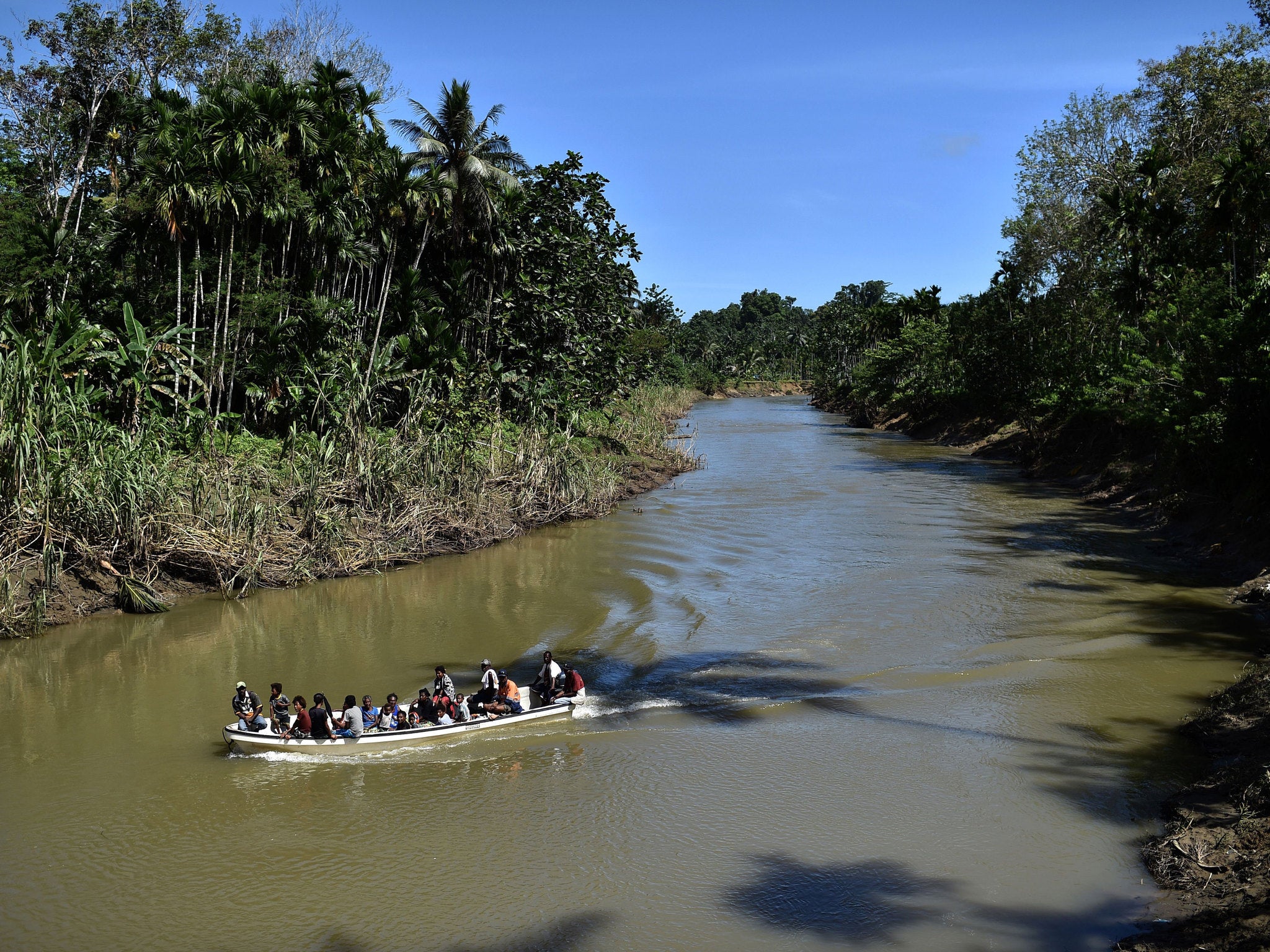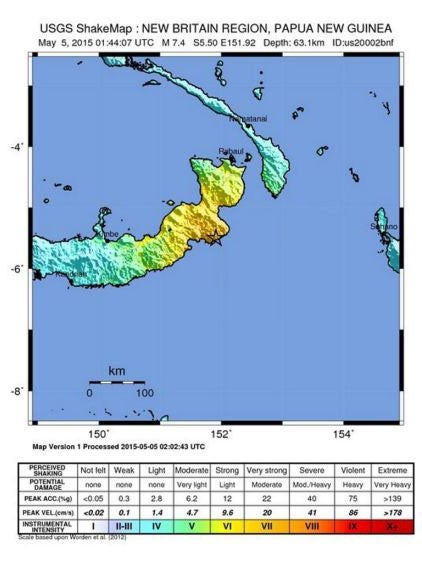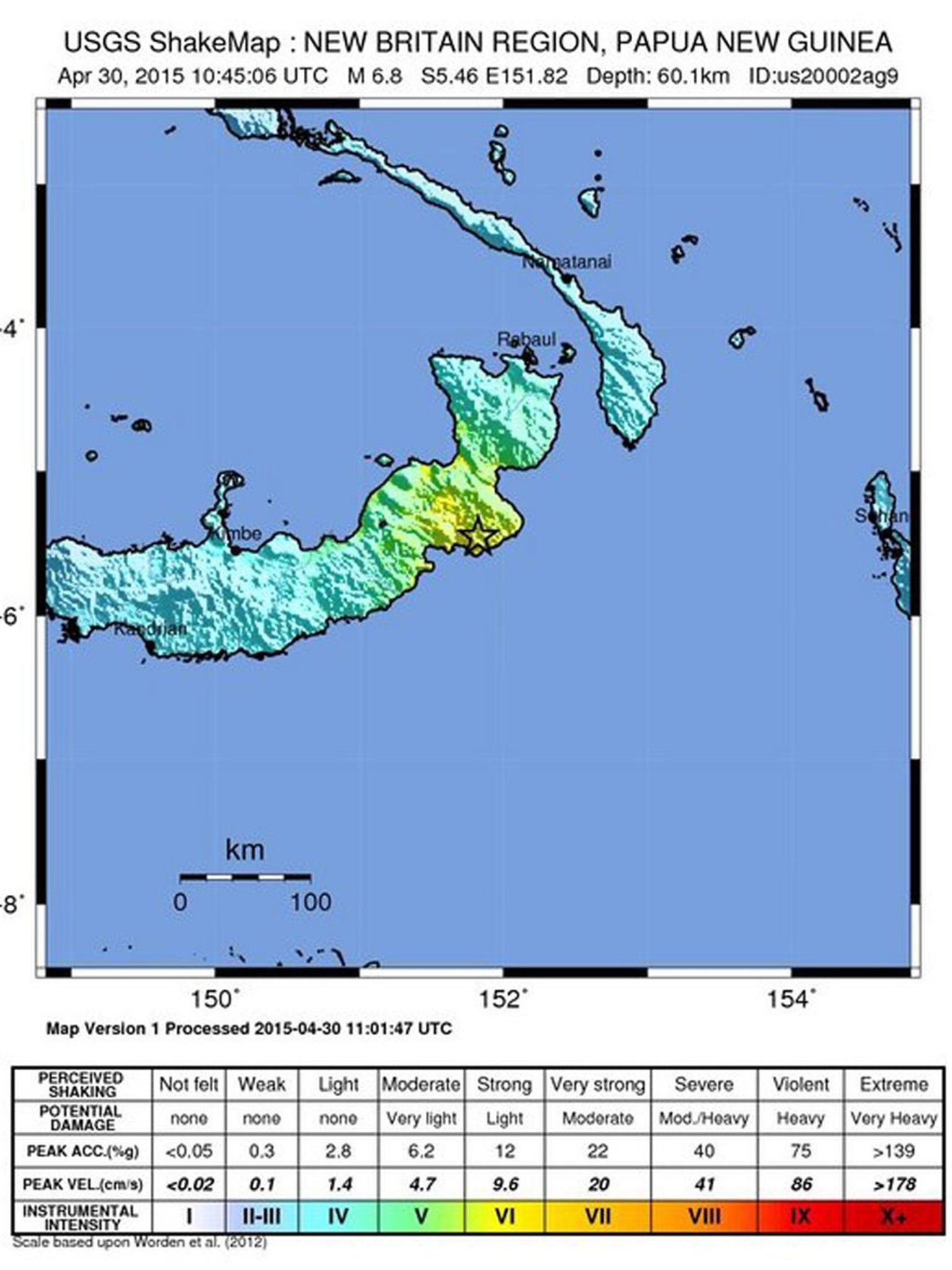Papua New Guinea hit by magnitude 7.5 earthquake sparking tsunami warning for coast
It has seen three major earthquakes in a week and almost 30 in a month

Your support helps us to tell the story
From reproductive rights to climate change to Big Tech, The Independent is on the ground when the story is developing. Whether it's investigating the financials of Elon Musk's pro-Trump PAC or producing our latest documentary, 'The A Word', which shines a light on the American women fighting for reproductive rights, we know how important it is to parse out the facts from the messaging.
At such a critical moment in US history, we need reporters on the ground. Your donation allows us to keep sending journalists to speak to both sides of the story.
The Independent is trusted by Americans across the entire political spectrum. And unlike many other quality news outlets, we choose not to lock Americans out of our reporting and analysis with paywalls. We believe quality journalism should be available to everyone, paid for by those who can afford it.
Your support makes all the difference.The third powerful earthquake in a week has struck Papua New Guinea, triggering a tsunami warning stretching almost 200 miles from the epicentre.
Power lines were brought down and walls cracked when the 7.5 magnitude quake hit the island of New Britain shortly before noon local time (2.44am BST) today.
The epicentre was about 80 miles south of the town of Kokopo and 26 miles deep, according to US Geological Survey data, as the result of movement along fault lines between the Australian and Pacific tectonic plates.

Tremors could be felt across New Britain, Latangai Island and Bougainville Island, and a series of eight huge aftershocks followed ranging from magnitude 4.9 to 5.9.
A tsunami warning was issued for “hazardous waves” within 200 miles of the epicentre and people living along the coast were put on alert.
A three-foot tsunami was seen in the harbour of Rabaul according to Papua New Guinea’s Geophysical Observatory but the warning has since been lifted.
The assistant director, Chris McKee, said there were no reports of flooding as the tsunami did not rise beyond the normal high tide level.

Power lines were brought down around Rabaul area, cutting the electricity supply to many homes, and there were reports of structural damage in Kokopo but none of serious injuries.
The Prime Minister directed Papua New Guinea’s army and national disaster agency to be on alert in the event of further seismic activity.
Peter O’Neill called on people to remain vigilant to further quakes.
"There are precautions that people must take when they feel an earthquake of any magnitude,” he added.
"In our island regions people have to be particularly vigilant for the potential of tsunamis…this is a serious issue and like all countries in the ring-of-fire around the Pacific we have to be prepared."
Today’s earthquake was in the same area as two large events that rocked the country last week.

A 6.8 magnitude quake struck 66 miles south of Kokopo on 1 May and a 6.7 magnitude quake was recorded 78 miles south of the town on 30 April.
A spokesperson for the US Geological survey said there have been almost 30 moderate to large earthquakes of magnitude five or over in the region since the latest bout of seismic activity started with another 7.5 event on 29 March.
“The plate boundary between the Australia and Pacific plates in the Papua New Guinea region is very active seismically,” he added.
“Few earthquakes are known to have caused shaking-related fatalities because of the remoteness of the region, though a M 8.0 earthquake in November 2000 – one of three similarly sized events over a two-day period – did cause several deaths.”
Additional reporting by APeditorial
Join our commenting forum
Join thought-provoking conversations, follow other Independent readers and see their replies
Comments